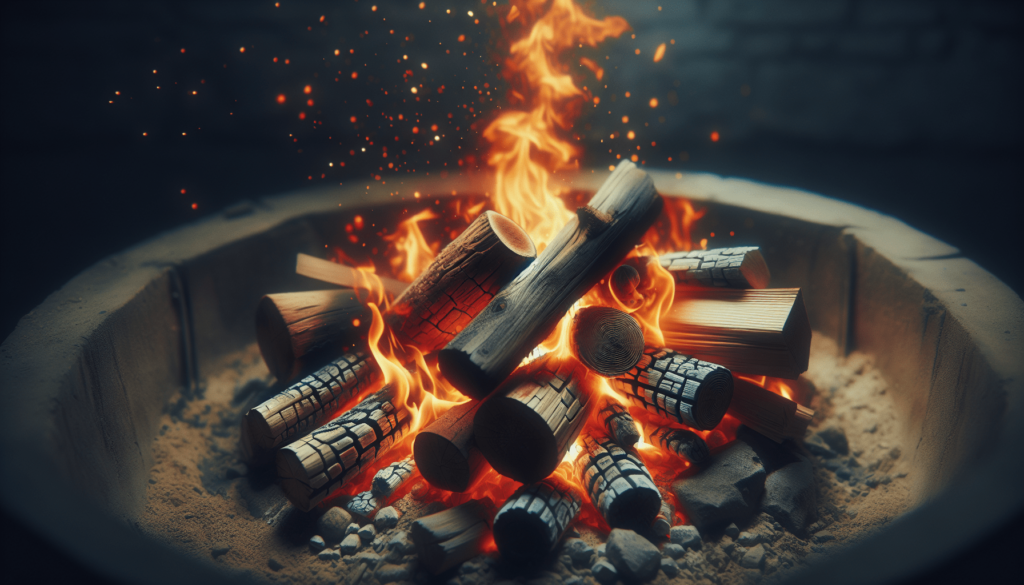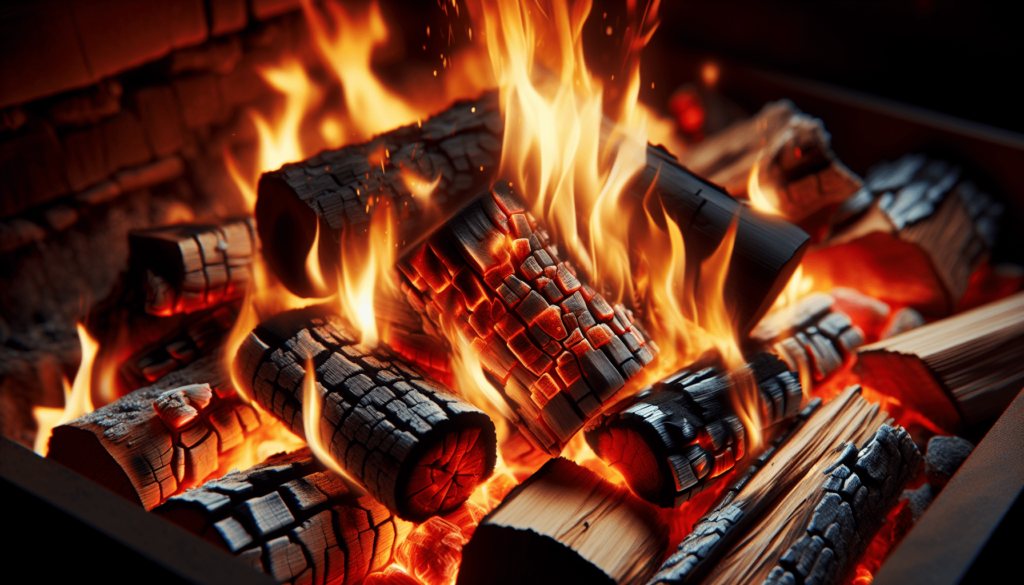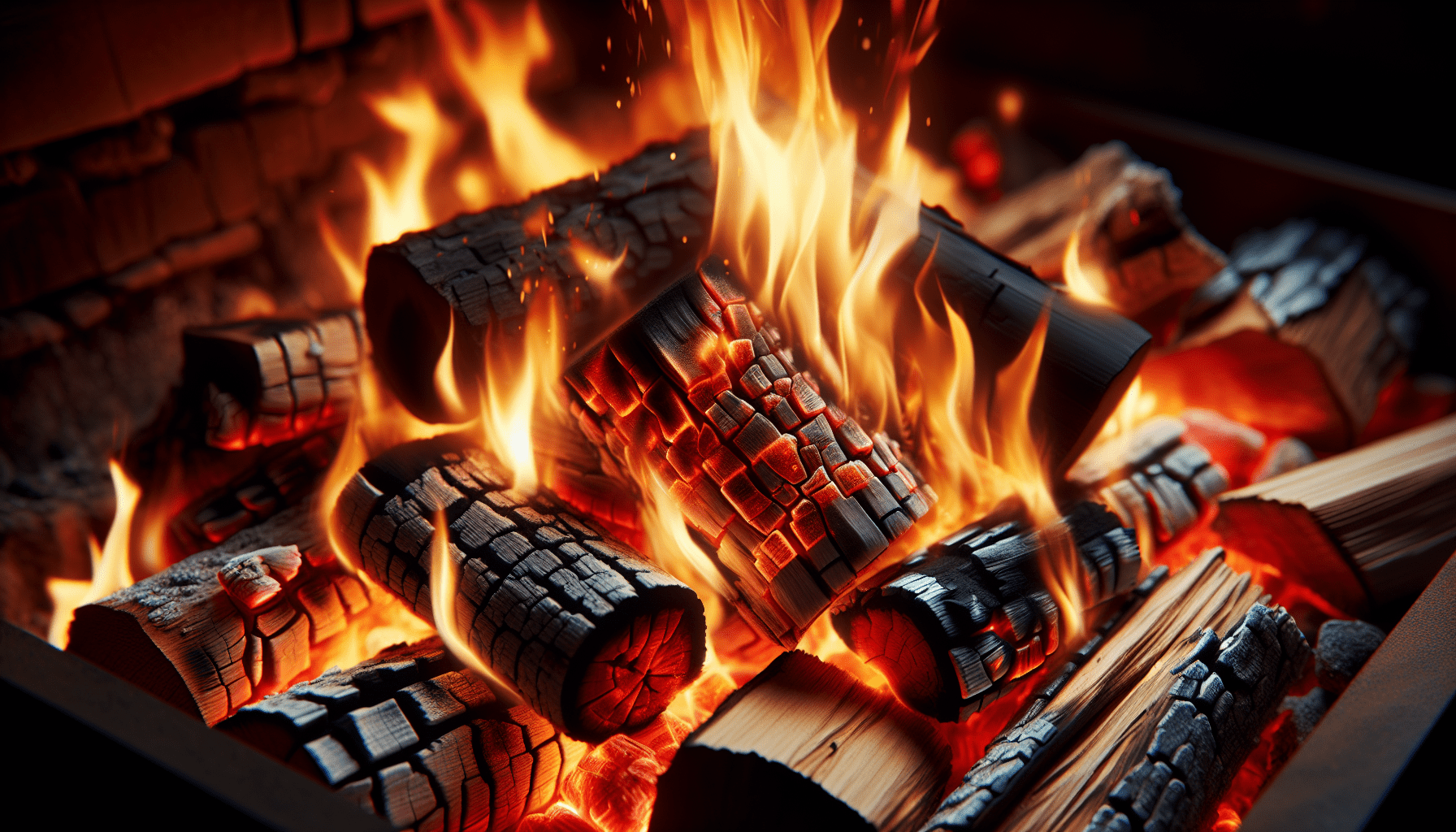Have you ever sat around a campfire and wondered about the term for burning wood? It seems like a simple concept, but the process of burning wood actually involves some fascinating science and terminology. Allow me to take you on a bit of a journey through the world of burning wood, from the basics to the complexities.
Combustion: The Formal Term for Burning
To start, the formal term for burning anything, including wood, is “combustion.” This might sound like something out of a high school chemistry class, but it’s actually rather straightforward. Combustion is simply a chemical reaction that occurs when a fuel (in this case, wood) reacts with oxygen to produce heat and light.
The Essentials of Combustion
Let’s break down what happens during combustion. There are three main components involved:
| Component | Description |
|---|---|
| Fuel | The wood itself. |
| Oxygen | Found naturally in the air. |
| Heat | Usually provided by a spark or another source of ignition. |
When these three elements come together, a process called oxidation occurs. The wood (which contains carbon and hydrogen) reacts with oxygen in the air, leading to the release of energy in the form of heat and light. This is why fires are warm and illuminating.
Types of Combustion
There are a few different kinds of combustion, and understanding them can help you get a clearer picture of what’s happening when wood burns. The main types are:
| Type | Description |
|---|---|
| Complete Combustion | This happens when there is enough oxygen, and it results in the wood burning cleanly, producing water (H2O) and carbon dioxide (CO2). |
| Incomplete Combustion | Occurs when there isn’t enough oxygen, leading to the production of carbon monoxide (CO) and soot. |
Complete combustion is what you’d ideally want in a well-ventilated fireplace or campfire, while incomplete combustion can lead to smoke and the potential buildup of harmful gases.
Pyrolysis: The First Step in Burning Wood
Before the wood actually bursts into flames, it undergoes a process called pyrolysis. This term might sound like something you’d hear from a biochemist or an episode of a science fiction show, but it’s quite simple.
What Happens During Pyrolysis?
During pyrolysis, the wood is heated to a high temperature in the absence of oxygen. This causes the complex organic molecules in the wood to break down into simpler molecules, including gases, liquids, and solid residues.
| Stage | Description |
|---|---|
| Initial Heating | The wood dries out as any moisture evaporates. |
| Decomposition | The wood breaks down into char, tar, and volatile gases. |
Essentially, pyrolysis is the step that prepares the wood for combustion. It breaks the wood down into smaller, more combustible pieces.

Ignition: Getting the Fire Started
Once pyrolysis has reduced the wood to simpler, more combustible forms, the next key step is ignition. Ignition is the event where the combustible gases released during pyrolysis meet a heat source (like a match or a lighter) and start burning.
Ignition Temperature
Every material has an ignition temperature—the minimum temperature required for it to combust. For wood, this temperature ranges between 300 to 580 degrees Celsius (572 to 1,076 degrees Fahrenheit), depending on the type of wood and its moisture content.
| Wood Type | Ignition Temperature (°C) |
|---|---|
| Softwood (pine, etc.) | 300 – 350°C |
| Hardwood (oak, etc.) | 350 – 400°C |
These temperatures are quite high, which is why you need more than just a spark to start a fire. The wood has to be heated sufficiently to reach its ignition temperature.
The Chemistry of Burning Wood
Understanding the specific chemical reactions involved in burning wood can add a layer of appreciation for this seemingly simple process. When wood burns, it primarily involves two main types of reactions: oxidation and thermal decomposition.
Oxidation Reactions
Oxidation is the central chemical reaction in combustion. The carbon and hydrogen in the wood react with oxygen, producing carbon dioxide, water, and releasing a significant amount of energy in the form of heat.
[ \text + \text_2 \rightarrow \text_2 + \text ] [ 2\text_2 + \text_2 \rightarrow 2\text_2\text + \text ]
Endothermic and Exothermic Reactions
Combustion involves both endothermic and exothermic reactions. Initially, energy is absorbed to break the chemical bonds in the wood (endothermic). Following this, the formation of new bonds (exothermic) releases more energy than was absorbed, resulting in the overall release of heat and light.

Smoke and Ash: The Byproducts of Combustion
Let’s not forget about the byproducts of burning wood – smoke and ash. Smoke is made up of tiny particles of unburned material, and the composition of the smoke can tell you a lot about the combustion process.
The Components of Smoke
Smoke primarily consists of:
| Component | Description |
|---|---|
| Water Vapor | H2O in gas form. |
| Carbon Dioxide | CO2, a greenhouse gas. |
| Carbon Monoxide | CO, a poisonous gas. |
| Particulate Matter | Tiny solid particles of unburned material. |
Ash
Ash is what remains after all the combustible material has been burned away. It consists mainly of inorganic minerals that were part of the wood, such as calcium, potassium, and magnesium.
The Role of Air Supply in Burning Wood
The role of air in burning wood cannot be overstated. As we discussed earlier, oxygen is a crucial component in combustion. The amount of air (and thus oxygen) that reaches the fire can significantly influence the burning process and the byproducts it generates.
Airflow Control
Airflow control is particularly important in fireplaces and wood stoves. By controlling the amount of air that reaches the fire, you can influence the rate of combustion and the heat output.
| Airflow Setting | Effect on Combustion |
|---|---|
| High Airflow | Faster, hotter burn, complete combustion. |
| Low Airflow | Slower burn, risk of incomplete combustion and smoke. |
Understanding how to manage airflow can make your fire not only more efficient but also safer.
Environmental Impact of Burning Wood
While burning wood might seem like a natural and even eco-friendly way to stay warm or cook food, it’s worth taking a moment to consider its environmental impact.
Carbon Footprint
Burning wood releases carbon dioxide into the atmosphere, contributing to the greenhouse effect. However, it’s a bit more complex than that. Trees absorb carbon dioxide while they grow, which somewhat balances out the carbon released when the wood burns, especially if new trees are planted to replace the ones that are cut down.
| Factor | Impact |
|---|---|
| Carbon Absorption | Trees absorb CO2. |
| Carbon Emission | Burning releases CO2. |
Air Quality
Incomplete combustion can produce air pollutants like carbon monoxide and particulate matter, which can negatively affect air quality. This is why many regions have regulations about when and where you can burn wood, especially in urban areas.
Safety Precautions When Burning Wood
If you’re planning to burn wood, whether in a fireplace, wood stove, or a campfire, there are certain safety precautions you should take to ensure everything goes smoothly.
Fire Safety Tips
| Safety Precaution | Reason |
|---|---|
| Use Dry Wood | Wet wood produces more smoke and less heat. |
| Maintain Airflow | Ensures complete combustion and reduces smoke. |
| Never Leave Unattended | Fires can quickly get out of control. |
These simple measures can make a world of difference in ensuring your fire is both efficient and safe.
The Cultural Significance of Burning Wood
Throughout history, the act of burning wood has held significant cultural meanings. From ancient rituals to modern-day family gatherings around a bonfire, fire has always been more than just a source of heat.
Historical Uses
In many cultures, fire has been a central part of daily life and ceremonial practices. Ancient civilizations used fire for cooking, protection, and as part of religious rituals.
Modern Significance
Today, gathering around a fire is still a popular social activity. Whether it’s a cozy evening by the fireplace or a summer barbecue, the act of burning wood continues to bring people together.
Varieties of Wood for Burning
Not all wood is created equal when it comes to burning. Different types of wood have different characteristics that can affect everything from how easy they are to light, to how long and hot they burn.
Hardwood vs. Softwood
The two main categories are hardwoods and softwoods. Hardwoods come from deciduous trees (like oak and maple), while softwoods come from coniferous trees (like pine and spruce).
| Wood Type | Characteristics |
|---|---|
| Hardwood | Dense, burns longer and hotter, harder to ignite. |
| Softwood | Less dense, easier to ignite, burns faster and cooler. |
Choosing the right type of wood for your needs can make your fire experience much more pleasant.
Seasoned Wood: Why It Matters
Seasoned wood refers to wood that has been dried out. Freshly cut wood, also known as green wood, contains a lot of moisture, which makes it harder to burn and produces more smoke.
How to Season Wood
The process of seasoning wood involves cutting it into logs and storing it in a dry, well-ventilated area for at least six months to a year. Properly seasoned wood will have a moisture content below 20%, making it much more efficient for burning.
Conclusion: The Science and Art of Burning Wood
Burning wood is more than just a way to stay warm. It’s a multi-faceted process that involves a variety of scientific principles and considerations. From understanding the basics of combustion to choosing the right type of wood, there’s a lot that goes into making a great fire. And let’s not forget the cultural significance and the sheer joy that comes from gathering around a crackling fire with friends and family.
So, the next time you find yourself entranced by the dance of the flames, you’ll have a deeper appreciation for the intricate dance of chemistry and tradition that makes it all possible. For what it’s worth, a fire is not just a fire; it’s a wonderful confluence of science, art, and human history.

